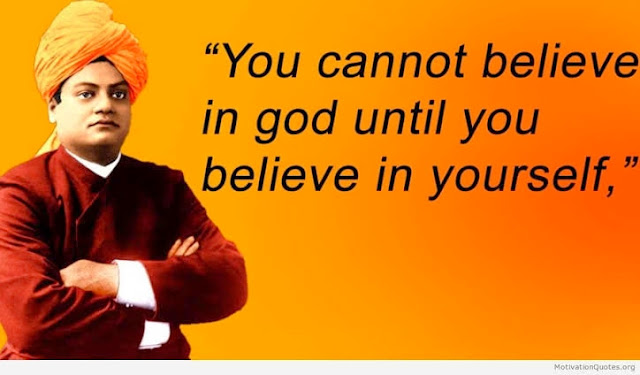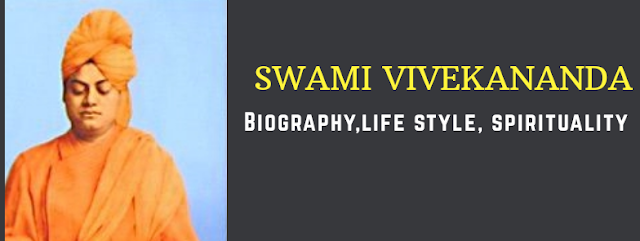Biography of swami vivekananda
BIOGRAPHY OF SWAMI VIVEKANAND....
omm shanti.. shanti...shanti
BIRTH AND CHILDHOOD LIFE OF SWAMIJI.
 |
| (12 January 1863 – 4 July 1902) |
considered Narendranath Datta (shortened to Narendra or Naren) in a Bengali family athis familial home at 3 Gourmohan Mukherjee Street in Calcutta, the capital of British India, on 12 January 1863 during the Makar Sankranti festival.He had a spot with a traditional family and was one of nine siblings.His father, Vishwanath Datta, was a legal advisor at the Calcutta High Court. Durgacharan Datta, Narendra's granddad was a Sanskrit and Persian scholar who left his family and transformed into a cleric at age twenty-five. His mother, Bhubaneswari Devi, was a fervent housewife. The dynamic, sound attitude of Narendra's father and the exacting aura of his mother helped shape his thinking and personality.
Narendranath was enthused about powerful nature since right off the bat and used to ruminate before the photos of divine beings, for instance, Shiva, Rama, Sita, and Mahavir Hanuman. He was intrigued by wandering strict fanatics and monks. Naren was underhanded and restless as an adolescent, and his people every now and again experienced issues controlling him. His mother expressed, "I entreated Shiva for a youngster and he has sent me one of his demons".
EDUCATION.
 |
| Add caption |
In 1871, at eight years old, Narendranath enlisted at Ishwar Chandra Vidyasagar's Metropolitan Institution, where he went to class until his family moved to Raipur in 1877. In 1879, after
his family's arrival to Calcutta, he was the main understudy to get first-division stamps in the Presidency College placement test.
He was an energetic peruser in a wide scope of subjects, including reasoning, religion, history, sociology, workmanship and literature. He was additionally inspired by Hindu sacred texts, including.the Vedas, the Upanishads, the Bhagavad Gita, the Ramayana, the Mahabharata and the Puranas.Narendra was prepared in Indian old style music, and normally took an interest in physical exercise, sports and sorted out exercises.Narendra considered Western rationale, Western way of thinking and European history at the General Assembly's Institution (presently known as the Scottish Church College). In 1881 he breezed through the,
Fine Arts assessment, and finished a Bachelor of Arts degree in 1884. Narendra examined crafted by David Hume, Immanuel Kant, Johann Gottlieb Fichte, Baruch Spinoza, Georg W. F.
Hegel, Arthur Schopenhauer, Auguste Comte, John Stuart Mill and Charles Darwin.He got intrigued with the evolutionism of Herbert Spencer and related with him, deciphering Spencer's book Education (1861).into Bengali. While concentrating Western rationalists, he additionally learned Sanskrit sacred writings and Bengali literature.William Hastie (head of Christian College, Calcutta, from where Narendra graduated) expressed, "Narendra is actually a virtuoso.
I have gone far and wide however I have never run over a fellow of his abilities and conceivable outcomes, even in German colleges, among philosophical understudies.
Narendra was known for his immense memory and the capacity at speed perusing.
Otherworldly apprenticeship – impact of Brahmo Samaj.
 |
| Swami vivekananda |
See additionally: Swami Vivekananda and reflection
In 1880 Narendra joined Keshab Chandra Sen's Nava Vidhan, which was built up by Sen in the wake of meeting Ramakrishna and reconverting from Christianity to Hinduism.[40] Narendra turned into an individual from a Freemasonry hold up "eventually before 1884"[41] and of the Sadharan Brahmo Samaj in his twenties, a breakaway group of the Brahmo Samaj drove by Keshab Chandra Sen and Debendranath Tagore.[40][29][42][43] From 1881 to 1884 he was additionally dynamic in Sen's Band of Hope, which attempted to debilitate young people from smoking and drinking.[40]
It was in this cultic[44] milieu that Narendra got familiar with Western esotericism.[45] His underlying convictions were molded by Brahmo ideas, which remembered conviction for a shapeless God and the censure of idolatry,[24][46] and a "streamlined, supported, monotheistic philosophy unequivocally shaded by a particular and advanced perusing of the Upanisads and of the Vedanta."[47] Rammohan Roy, the organizer of the Brahmo Samaj who was emphatically impacted by unitarianism, endeavored towards a universalistic translation of Hinduism.[47] His thoughts were "changed [...] significantly" by Debendranath Tagore, who had a sentimental way to deal with the improvement of these new tenets, and addressed focal Hindu convictions like resurrection and karma, and dismissed the authority of the Vedas.[48] Tagore likewise brought this "neo-Hinduism" closer in accordance with western obscurity, an improvement which was facilitated by Keshubchandra Sen.[49] Sen was affected by introspective philosophy, an American philosophical-strict development firmly associated with unitarianism, which accentuated individual strict experience over simple thinking and theology.[50] Sen strived to "an open, non-renunciatory, everyman sort of otherworldliness", presenting "lay frameworks of profound practice" which can be viewed as models of the sort of Yoga-practices which Vivekananda promoted in the west.[51]



Great
ReplyDelete